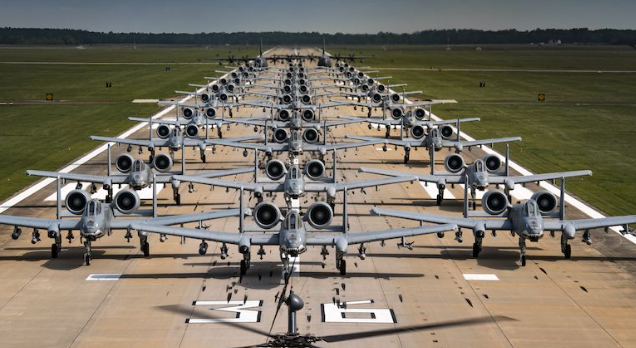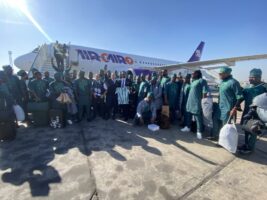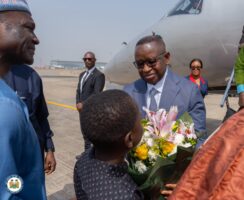African nations are significantly boosting their aerial defense capabilities in 2025, with many expanding their military aircraft fleets in response to evolving regional threats and strategic demands.
These aircraft serve a broad range of missions from combat and surveillance to logistics and humanitarian support reflecting a continent increasingly focused on securing its airspace and stabilizing turbulent zones.
A recent assessment by Global Firepower ranks the continent’s leading air powers based on the total number of active military aircraft, including fighters, bombers, helicopters, and transport planes.
The report excludes aircraft still in production or awaiting delivery, offering a snapshot of current operational strength.
Among the top performers are Egypt, Algeria, and Angola, each demonstrating strong commitments to modernizing their air forces in line with both national and regional security imperatives.
Their fleets not only serve combat roles but also support critical functions such as peacekeeping, disaster response, and intelligence gathering.
Below are Africa’s top 10 military Air Fleets in 2025
1. Egypt – 1,093 Aircraft
Egypt maintains its status as Africa’s dominant air power and ranks 8th globally. With over 1,000 aircraft, Egypt has invested heavily in a diverse and modern air fleet to project power, safeguard national interests, and support missions across the Middle East and North Africa.
2. Algeria – 608 Aircraft
Algeria holds 17th place worldwide, fielding a sizable and capable air fleet. Its aircraft are essential for monitoring its extensive desert frontiers, conducting counterterrorism operations, and asserting military readiness in North Africa.
3. Angola – 298 Aircraft
Angola ranks 34th globally, with a steadily growing air fleet that supports both security operations and humanitarian missions. Its investment in air power reflects its aim to protect resource-rich areas and strengthen its military infrastructure.
4. Morocco – 260 Aircraft
Read Also
At 37th in the world, Morocco operates a well-balanced fleet tailored for reconnaissance, border security, and internal stability. The Royal Moroccan Air Force plays a key role in regional defense and intelligence operations.
5. South Africa – 182 Aircraft
South Africa, ranked 50th globally, fields one of Africa’s most technologically sophisticated air forces. Its aircraft support continental peacekeeping deployments, border patrols, and rapid disaster response initiatives.
6. Sudan – 165 Aircraft
Sudan places 52nd in the global ranking. Despite internal challenges, its air force continues to play a pivotal role in national defense and internal conflict management, particularly in unstable regions of the country.
7. Nigeria – 163 Aircraft
Nigeria holds 54th position globally. Its air power is critical in counterinsurgency efforts against Boko Haram and other extremist groups. The Nigerian Air Force also contributes to humanitarian relief and border surveillance operations.
8. Kenya – 156 Aircraft
Ranked 55th globally, Kenya’s air fleet underpins its role as a regional security actor. The Kenyan Air Force is frequently deployed for peacekeeping missions and is instrumental in defending the country’s airspace.
9. Tunisia – 154 Aircraft
Tunisia comes in at 57th globally, with its air force focused heavily on counterterrorism and internal security. The fleet also supports broader efforts to maintain regional peace in North Africa.
10. Libya – 143 Aircraft
Despite ongoing political fragmentation, Libya ranks 59th in the world. The country is in the process of rebuilding its air force, which is vital for restoring control over national territory and supporting future security reform.
The steady growth of these fleets underscores a broader shift toward enhanced military readiness and greater regional self-reliance in the face of modern security challenges.





